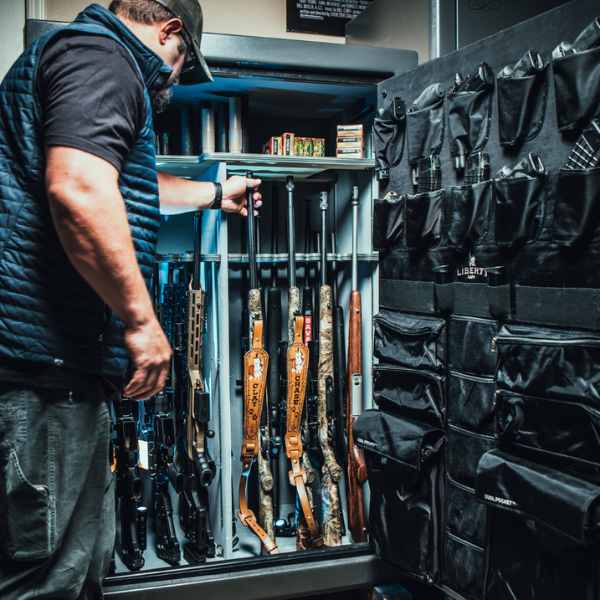No gun safe is completely fireproof. However, some offer more fire resistance than others. The trick is knowing what to look for while shopping for your safe.
Here’s what you should know about gun safes and fire-resistance.
Some Gun Safes are More Fire-Resistant
There are safe manufacturers that focus solely on security. Then there are those focusing on fire resistance. There are other safe manufacturers that focus on both security and fire resistance.
Unfortunately, it is not always that simple to pick out what safes are more fire-resistant than others unless you “take a look under the hood,” so to speak. The materials used and howthey are used can determine how well a safe will withstand a house fire.
There are three ingredients that go into building a safe to protect the contents it holds including firearms, valuables, and important documents.
- Heat-activated, high-quality expanding door seals to keep smoke, heat, and fire out
- High-quality steel that is 12-gauge or thicker
- Interlocking layers of UL-rated fireboard (not sheetrock) that covers all bare metal surfaces without gaps
How a Safe is Fire-Tested Matters
The type of fire testing for a gun safe model gives a good idea about how well it will stand up to a fire.
For example, Liberty Safe tests our safes according to standards used by NIST for full-scale home fire testing.
These standards give a more accurate representation of what happens to temperatures inside a typical home during the first 10 minutes of a fire.
Instead of ramping up the temperature in the test furnace to 1200° after 20-30 minutes, Liberty’s test raises the temperature within 10 minutes.
Could a Gun Safe Survive a House Fire?
There is no guarantee any gun safe will survive a house fire. Where you keep your safe also plays a part in whether it can survive a fire.
Keeping your safe out of areas in your home more likely to catch on fire helps. Avoid putting your safe in your garage, kitchen, or in rooms directly next to, above, or below those areas.
We have seen catastrophic wildfires over the past couple of years that incinerate homes and vehicles in a matter of minutes. These fast-moving fires with high temperatures reduce the possibility of anything surviving.
By choosing a gun safe with Liberty’s industry-leading fire protection, your safe has a better chance against a house fire.

